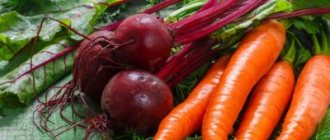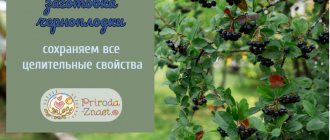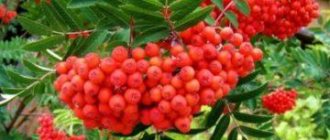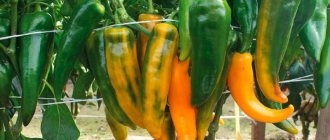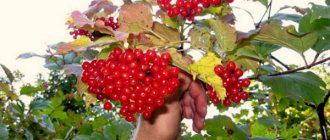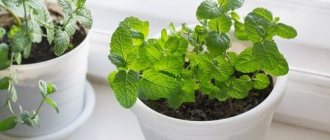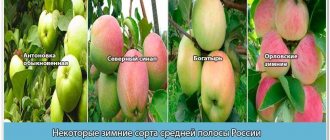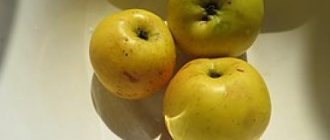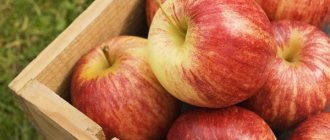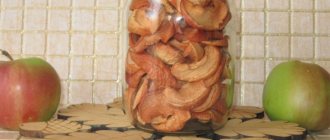Summer and autumn are the season for growing apples, picking them and storing them properly. Winter varieties of apples can last until the next harvest. How to do this?
Apples of autumn and winter varieties should be removed from the tree when they are full, but not yet overripe. This state of the fruit is called “removable ripeness.” You can understand whether your apples have reached it or not using simple tests.
- Take an apple, lightly press it: if, when pressed with your finger, the skin bends and after a few minutes the dent disappears, the fruit is unripe; The concavity will remain - it’s time to remove it.
- Add 1 g of potassium iodide solution to 1 liter of water and place half an apple in it. If after 2 minutes its edges turn blue, and closer to the middle the flesh is yellow, then it’s time to harvest. The blue color of the edges and core of the apple means that the fruits have not yet reached removable ripeness, and if the flesh has acquired a uniform yellow color, you should know that the apples are overripe on the branches and are unlikely to be stored well.
An overripe fruit can be easily recognized by the condition of the core.
Features of late ripening fruits
The fruits of winter apple varieties have a harmonious taste and persistent aroma. They ripen towards the end of September or beginning of October, when other fruits have already been harvested. Varieties removed from the branches in the fall (before frost) have a long shelf life.
They have larger fruits with a higher content of minerals, especially potassium and iron. Apples contain pectin, vitamins B1 and B2, and dietary fiber. The fruits have a strong peel and a dense pulp consistency. They are suitable for long-term storage and transportation.
Information. In industrial fruit growing, it is winter varieties of apple trees that occupy a large area of orchards.
Most popular types
- Bogatyr - large heavy fruits of light green color. The pulp is sweet and sour. Ripeness occurs by the end of December. You need to pick apples in October, when the fruits can already gain juice before the first frost.
- Aport - large red apples with a glossy skin and crumbly pulp. The taste is sweet and sour, used fresh or used for juices, marmalade, jam. The harvest is harvested at the end of September, it ripens in a month.
- Antonovka is an early winter variety that is especially popular. Apples have a green-yellow color, the flesh is juicy, sweet and sour. Fruit is harvested in September. Without processing, they are stored for three months.
- Jonathan - round-conical fruits of bright red color with a glossy sheen. The pulp is sweet, with increased juiciness and a pleasant aroma. Collection is recommended at the end of September. In cold conditions they are stored until April - May, in warm storage - until February.
How to determine the ripeness of apples
The indicated periods are very arbitrary. The ripeness of apples is affected by air temperature and humidity, tree care, and summer aridity. Therefore, it is necessary to be able to correctly determine the ripeness of apples. I'll teach you how to do it. If harvested early, the taste of the apples will deteriorate. If apples are left on the branches too long, they will taste mealy and the flesh will turn brown. There are several ways to determine the ripeness of apples:
- Carrion. If there are large apples among the fallen apples, the harvest is ripe.
- Press down on the apple with your thumb. If the dent disappears, the apples are not ripe. If the skin splits under your finger, you are late in harvesting. If the dent does not level out, start picking the fruit.
- Tasting. The ripe fruit is bright and even in color, without darkening on the skin. The pulp is light, sweet and sour. The seeds are dark brown.
- Chemical method. Prepare a solution of water, potassium iodide and iodine. Drop the solution onto the cut of the apple and observe the reaction for a couple of minutes. Iodine reacts with starch, which is abundant in unripe apples; the amount of starch decreases as they ripen. If the cut turns blue, the fruits are not ripe. A yellow cut indicates that the harvest has been over-exposed. Blue border of the cut with a yellow core - start harvesting.
There are specially prepared chemical kits on sale for conducting a test based on the latter option.
What time to rent for storage?
Winter apples are harvested in mid-autumn; it is important to finish the work before persistent cold sets in. Unlike other types of apples, fruits intended for long-term storage are not allowed to fully ripen. They reach consumer maturity not on tree branches, but in boxes. The collection begins when the end of September arrives.
Apples are still hard and sour, they contain a large amount of starch. After 2–3 months, during the ripening process, the fruits acquire the color characteristic of the variety, and a pronounced aroma appears. Starch undergoes hydrolysis, turning into sucrose and glucose. Apples become sweeter and juicier.
The timing of crop ripening is influenced by weather conditions. In hot summers, the fruits ripen earlier; in the cold season, ripeness is delayed for several weeks. In addition to the calendar, experts determine the time when to pick apples for storage based on several criteria:
- fruit size;
- age – time from flowering taking into account temperature;
- cover color;
- amount of starch;
- pulp density.
Gardeners just need to know the basic rules when to pick apples for storage so as not to miss the optimal picking time:
- apples are easily separated from the branch along with the stem;
- the seeds have acquired a dark brown color;
- The fruits are hard and sour, but large.
Advice. When there are several good fruits lying under a tree in calm weather, this is a signal that it is time to pick the fruits for storage.
How to find out exactly the timing of harvesting apples for storage:
How to treat apples before storage
Before storing, fruits are sorted by size. Large fruits are eaten first - they store worse. To extend shelf life, the fruits are treated in the solution for 2-3 minutes. one of the substances presented in the table, and then thoroughly dried:
| Name | How to divorce |
| Glycerol | Apply to a cloth and wipe the fruit |
| Beeswax | Dilute 200 ml of propolis in 1 liter of alcohol |
| Potassium permanganate | 5 g per 10 liters of water |
| Paraffin | For 1 liter of ethyl alcohol - 200 g of substance |
| Soda | 0.5 kg per bucket of water |
| Iodine-salt solution | For 1 liter of water - 4 tbsp. starch, 30 drops of iodine, 8 g table salt |
Important!
Processed fruits are washed with soap and water before use.
Before processing, the fruits are placed under an ultraviolet lamp. The procedure destroys harmful microorganisms.
How to pick fruit?
Fruit harvesting has its own rules, ranging from the choice of weather and time of day to the method of picking apples. For winter varieties that are placed in long-term storage, it is especially important to follow the collection rules:
- Do not water the tree before harvesting.
- Choose dry weather for work. It is better to start by lunchtime, when the dew has dried. The fruits must be dry; humidity promotes the spread of diseases.
- First of all, apples are picked from the lower branches, gradually moving to the top.
- Fruits should not be pulled, as this will damage the branches. They are taken in the hand and rotated, lifting them up. With this technology, the stalk is carefully separated from the branch. Its presence is a good guarantee for long-term storage.
- The fruits are removed and placed in containers carefully, trying not to damage the peel and the waxy coating on it.
- First, apples are picked from the south side of the tree, where they ripen earlier.
Attention. You should not shake the tree to get fruits that are on high branches.
If the fruits are damaged by falling, they cannot be stored. Such apples will quickly rot themselves and spoil the nearest fruits.
Apples are picked from high branches using a stepladder or special devices - fruit pickers. This is a purchased or homemade plastic structure with cutouts along the edges. It is attached to a long stick and allows you to carefully remove the fruits. Wormy, damaged fruits and carrion are immediately rejected for processing.
How to properly pick apples for storage:
Choosing a variety for storage
The duration of storage of apples at home is associated with varietal characteristics:
- summer varieties retain their qualities for 2-4 weeks;
- autumn ones last up to 2 months, they are eaten with pleasure until the new year;
- winter ones do not lose their presentation for 4-7 months.
Only winter varieties are suitable for storing apples in winter. They have the main quality that allows them not to lose their presentation and useful properties - keeping quality. During harvest, they are not distinguished by their meatiness, sweet taste and beautiful appearance, but during storage they ripen and gain the missing qualities. The thick peel and tough pulp help preserve the fruit until May.
For central Russia, the ideal option is Antonovka, Bogatyr, Vityaz, Northern Sinap, Zhigulevskoye, Mayak, Izbornitsa, Orlovskoye Zimneye, Cortland, Bananovoye, the classic Melba and Welsey. For the southern regions, Jonathan, Aurora Crimean, Renet Simirenko, Starking and Olympic are more suitable. These varieties of apples are winter varieties that have good shelf life. Knowing how long apples can be stored, you can provide yourself and your family with vitamin products throughout the winter.
Apples that are best stored are those collected from mature trees and located on the south side, where there is plenty of sunlight. Young apple trees are often attacked by pests and diseases, so problems may arise when laying fruits for the winter.
Preparing to store for the winter
Before being placed in long-term storage, apples must undergo preparation. The first stage is sorting. Fruits are selected according to several parameters:
- size – small, medium, large;
- quality - whole peel, absence of wormholes and other damage, presence of a stalk;
- variety – depending on the variety, apples have different shelf life.
After picking, apples should not be left in the air for a long time; it is advisable to immediately send them to storage.
Advice. The optimal container for storing apples is wooden boxes. Before planting the fruits, they must be disinfected with a solution of potassium permanganate and dried.
How to store and pack?
Long-term storage of apples is possible only when the temperature is low enough - 2–5°C. The humidity in the room matters; it should be between 85–90%. In a dry microclimate, fruits quickly wither and wrinkle.
Containers with wet sand will help avoid this. If a basement is used for storage, it must be prepared. Clean up, whitewash the walls with a solution of lime and copper sulfate. Disinfection will get rid of bacteria and fungi that threaten the condition of the apples.
There are several ways to stack apples:
each fruit is wrapped in paper and placed with the stalk facing up; it can be placed in several layers;- apples are sprinkled with sand or clean sawdust, they should not touch each other, they are placed in a box in 3-4 layers;
- in hermetically sealed plastic bags, apples are poured into 5–7 kg, stored in the basement or in a hole outside, covered with earth.
The places where apples can be stored can be the following: pantry, balcony, basement, refrigerator.
Important! Apples should not be stored next to other fruits and vegetables. They emit ethylene, which is harmful to food.
During the winter, the fruits are regularly inspected , and rotten apples are removed.
How to preserve apples in winter:
Lunar calendar 2021 for apple picking
During the waxing moon, sap flow in plants and fruits is activated. The latter accumulate moisture and store more nutrients. During the waning moon, the plant seems to fall asleep and sap flow decreases.
When planning when to pick winter apples, you need to take into account the zodiac constellations that the Moon visits. You should not hope for good shelf life if the periods of Pisces, Cancer, and Scorpio are chosen for harvesting.
The most unfavorable period for harvesting apples is the full moon. Fruits harvested at this time will not be stored for long.
Favorable days
In the southern regions, preparations can be completed in October. The most favorable days for harvesting fruits can be seen in the table.
| Month | Favorable days |
| August | 2-3, 7-12 |
| September | 3-8, 12-16, 22-27 |
| October | 1-4 |
Unfavorable days
Apple picking dates have to be postponed if the weather turns bad. You should not wait for the date recommended by astrologers when weather forecasters promise a week of rain or early frosts. Days not indicated in the tables of favorable and unfavorable periods are neutral and are quite suitable for winter preparations.
| Month | Unfavorable days |
| August | 5-6, 14,15, 20-21, 23-24 |
| September | 1 until morning 3, 10-11, 19-21, 29-30 |
| October | 8-9, 20 |
You should not expect to keep the white filling until the New Year, even if you follow the recommendations. This is a summer variety and can only be frozen or preserved for the winter.
